Worst Day After Knee Replacement
What is the worst day after knee replacement?
I am a physical therapist who specializes in treating patients after a total knee replacement. In my experience, the worst day after knee replacement is the third day. I will explain why in this article and share some advice for making that third day less challenging.
Facebook Group Survey
In my Facebook group of more than 11K members I asked “What would you say was the worst day after knee replacement surgery?” You can see from the screenshot below that 52% of respondants chose day 3.
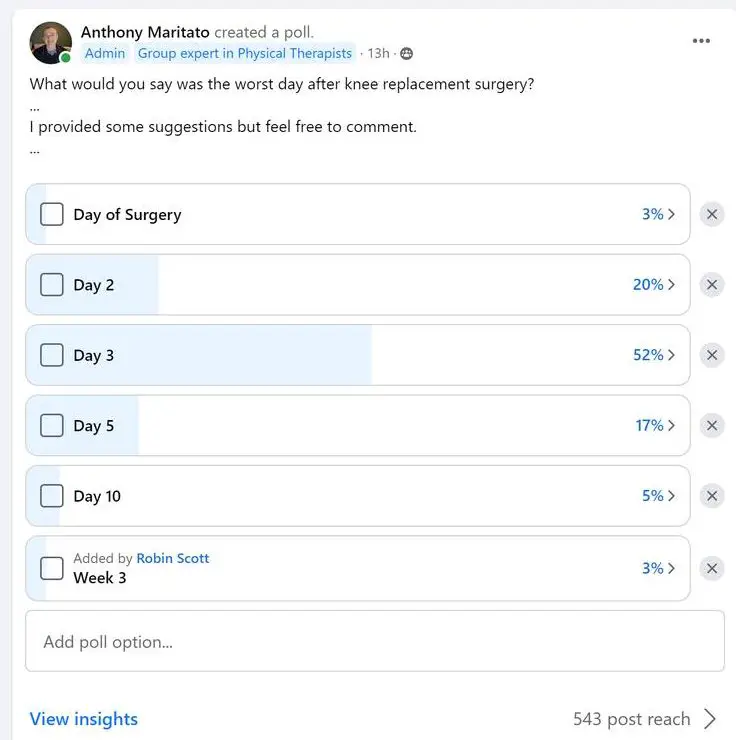
Introduction
If you’re scheduled for a knee replacement or have recently undergone the procedure, you’re likely asking yourself, “What will the recovery process look like? What will be the worst day after knee replacement?” It’s a pertinent question to understand what to expect and prepare for the hurdles ahead.
Recovery from a total knee replacement varies from person to person, but there’s a general consensus among patients and healthcare providers about the timeline of the healing process. It’s important to remember that each day can bring its unique challenges, with pain and discomfort being most intense usually around the third day post-surgery. This article will guide you through the different stages of recovery, helping you navigate the tough times and progress towards regaining your mobility.
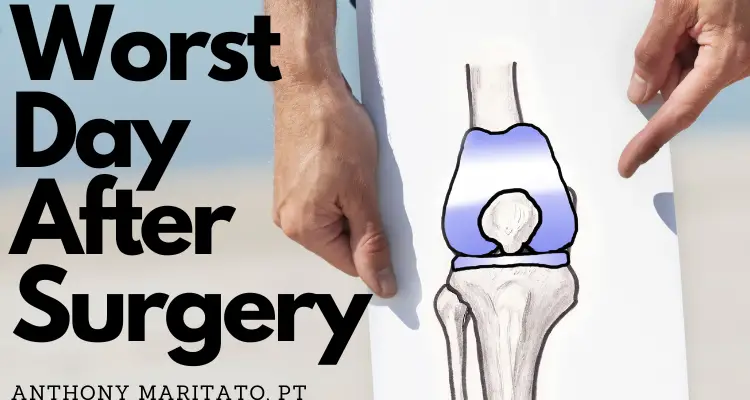
Day 1: The Day of Surgery
The first day of your knee replacement journey is filled with mixed emotions – anxiety, anticipation, and hope. The day of the surgery is primarily about the procedure and initiating recovery. Interestingly, many patients report this day as fairly comfortable, thanks largely to anesthesia and pain-blocking medications.
Immediately post-surgery, you may feel groggy or sleepy due to the residual effects of anesthesia. You will be monitored closely by healthcare professionals who ensure your vitals are stable and you are recovering well from anesthesia. You’ll likely be resting in bed for the remainder of the day, taking your first steps towards healing.
It’s important to note the following points for Day 1:
- Rest: You will likely spend most of this day in bed, resting and recuperating from the surgery.
- Pain management: Though anesthesia and pain medication help, you may still experience some discomfort or pressure in the surgical area.
- Hydration and nourishment: You might be allowed liquids and light meals, depending on your doctor’s advice.
- Physical therapy: You might begin light exercises or movements with the help of a physical therapist.
On this day, you might not feel the full brunt of the surgical impact due to the analgesics and anesthetics in your system. Nonetheless, it’s essential to follow your medical team’s instructions, focusing on resting and initiating the healing process.
As the day progresses, you might feel worn out. However, the physical exhaustion will be tempered by the knowledge that you’ve taken a crucial step towards improved mobility and pain-free living. Remember, this is just the first day in your journey of recovery. The real test begins once the anesthesia fully wears off and the reality of recovery sets in.
Day 2: Post-Surgery Trauma Sets In
The second day after knee replacement surgery is when the reality of the procedure begins to settle in. The residual anesthesia starts to leave your system, and the surgical trauma makes its presence felt more keenly.
One might start feeling the effects of surgery more on the second day, including discomfort in the surgical area. You may feel fatigued and have a lack of appetite. It is important to drink fluids to prevent dehydration, which can cause additional discomfort and slow down the healing process. Pain medication continues to be administered as per your doctor’s directions.
Let’s break down what to expect on day two post-surgery in the table below:
| Aspect | What to Expect |
|---|---|
| Pain | Increased sensation of pain as anesthesia wears off. |
| Physical Activity | Continued assistance with physical therapy, focusing on light exercises and movements. |
| Diet | Possibly a lack of appetite. Importance of staying hydrated and consuming light, nutritious meals. |
| Mood | Can experience frustration or anxiety as the impact of surgery sets in. |
The second day is challenging, but remember that it’s a normal part of the recovery process. It’s crucial to communicate any unexpected symptoms or significant changes to your healthcare team, who can help guide you through this difficult phase.
Taking care of your body, following

Day 3: The Worst Day After Knee Replacement
The third day post-knee replacement surgery is often regarded as the worst day of the recovery journey. As the anesthesia has completely worn off by this point, you become fully alert and conscious of the post-surgical pain and discomfort.
Pain Management
The pain usually peaks around this time due to swelling and stiffness around the surgical area. Some patients might struggle with managing their prescribed pain medication, or the medication might not work as effectively as expected. Consequently, the pain levels can seem overwhelming, which is why this day is generally considered the most difficult in the recovery process.
Mobility and Physical Therapy
Day three also signifies a significant turning point in your physical therapy regimen. Therapists might introduce new exercises aimed at increasing your knee’s flexibility and strength. Despite the discomfort, it’s important to push through these exercises as they’re critical to your long-term recovery and mobility.
Emotional Well-being
While dealing with physical pain, it’s also common for patients to experience a low point emotionally on this day. The realization of the recovery journey ahead can seem daunting, which is why maintaining a positive mindset is crucial.
Here are a few tips to help navigate Day 3:
- Pain Management: Take your pain medication as prescribed. Don’t hesitate to communicate with your healthcare provider if the pain seems unmanageable.
- Physical Therapy: Despite the discomfort, try to participate actively in your physical therapy sessions.
- Stay Hydrated and Nourished: Maintain your fluid intake and continue eating nutritious meals to support your body’s healing process.
- Positive Mindset: Remember that this difficult phase is temporary and integral to your recovery. Reach out to your support system or use mindfulness techniques to maintain your mental well-being.
Despite the challenges that Day 3 brings, remember that each step you take is a step closer to recovery. Pain is a part of the healing process, and managing it effectively on this day will prepare you better for the rest of your recovery journey.
Day 5: Adjusting to New Routines
By day five of your recovery from knee replacement surgery, you are likely to have established a routine. The intense pain experienced on day three should start to reduce, and you’ll have a better understanding of how to manage it effectively. This day is often a turning point, where patients start feeling more confident in their ability to navigate the recovery process.
You would have gained more insights about your condition from interactions with the physical therapy team and the surgical team. They’ll have addressed your concerns, helping to clear any confusion or fear you might have had about your recovery.
Mobility Improvements
Around this time, you’ll start noticing improvements in your mobility. The physical therapy sessions would begin to pay off, and you might be able to stand and walk more freely compared to the previous days. In some cases, you might start transitioning from a walker to using a cane, a significant milestone on your recovery journey.
Managing Pain and Discomfort
Pain management continues to be a crucial part of recovery. While the levels of pain might have lessened compared to the third day, some discomfort will persist. Continue taking your prescribed medication, ensuring you’re comfortable enough to participate in physical therapy.
Continued Care and Rest
Even though you’re making progress, it’s essential to continue taking care of your body. Resting adequately, maintaining a healthy diet, and staying hydrated are key elements that would aid in your recovery.
Day five of the recovery journey after knee replacement surgery marks a shift towards adjusting to the new routines. It’s a day of optimism, where you’re likely to see tangible improvements in your mobility and are better equipped to manage your pain. Always remember that everyone’s recovery journey is unique, and it’s crucial to listen to your body and take things at your own pace.
Day 10: Gradual Progress
Reaching the tenth day after knee replacement surgery is a significant milestone in your recovery journey. By now, you will have settled into a routine, and you should be seeing gradual, but steady, progress in your mobility and overall comfort levels.
Improvements in Mobility
Ten days into recovery, you should be able to move around with increased ease. You might still be using a cane, but there should be a noticeable improvement in your walking capability. Each step taken is an accomplishment, a testament to your determination and the hard work put into your physical therapy sessions.
Reduced Pain Levels
Pain levels should have reduced significantly by now compared to the initial days. It’s crucial to continue with your prescribed pain management plan to ensure comfort and ease during physical therapy sessions and everyday movements.
Physical Therapy and Exercise
Your physical therapy routine will likely be more demanding, focusing on strength building and enhancing flexibility. Remember, these exercises are key to achieving a full range of motion in your new knee and ensuring a successful recovery in the long run.
Emotional Well-being
By day ten, you should feel more emotionally adjusted to your recovery process. The progress you’ve made will likely boost your morale. However, it’s essential to continue practicing self-care and maintain a positive mindset to navigate any challenges that come your way.
Day 10 after knee replacement surgery is characterized by gradual but steady progress. This period signifies a crucial phase in your recovery journey, where your efforts in managing pain and participating in physical therapy start yielding tangible improvements. Despite the challenges, always remember that each day is a step closer to complete recovery and improved quality of life.
Day 28 and Beyond: The Road to Full Recovery
Four weeks into your recovery from knee replacement surgery, you’ve reached a substantial milestone. This phase is all about consolidating your gains and looking ahead to the journey that still lies in front of you. It’s important to remember that each person’s recovery is unique, and progress rates can vary.
Increased Independence
By now, you should notice a considerable increase in your independence. You might be able to walk without a cane or with only occasional use. There should be significant improvement in your overall mobility, potentially resuming some of your regular activities, albeit carefully and under guidance.
Continued Physical Therapy
Your physical therapy will likely continue, now focusing on improving strength and balance and maximizing the function of your new knee. These exercises are essential for a full recovery and should be done consistently.
Pain Management
While the most severe pain should be behind you, mild discomfort and occasional pain may persist, especially after physical therapy sessions. Continue your pain management plan as advised by your healthcare provider.
Mental Health
As you regain your mobility and independence, your emotional well-being should also improve. Continue to engage in practices that help maintain a positive mindset. Connect with your support group, share your experiences, and never hesitate to seek help if you’re feeling down.
The journey to full recovery after knee replacement surgery is a marathon, not a sprint. By day 28 and beyond, you should be well on your way to regaining your lifestyle. Remember to be patient with yourself and take one day at a time. Progress may seem slow at times, but with continued care and commitment, you’ll soon enjoy the benefits of your new knee.
Article Summary and Key Takeaways
This article provided a comprehensive overview of the recovery journey following a knee replacement surgery, focusing on the worst day after the procedure, typically the third day, and key milestones thereafter.
Below are the primary takeaways from each phase of the recovery process:
- Day 1: The day of surgery is typically characterized by fatigue due to anesthesia, but pain is usually well-managed with medication.
- Day 2: The trauma of the surgery sets in as the anesthesia wears off, leading to increased discomfort. Hydration and adequate rest are crucial during this stage.
- Day 3: Often the worst day after knee replacement, pain levels and swelling usually peak on this day. Pain management and physical therapy play vital roles in navigating this challenging phase.
- Day 5: A routine starts to develop, and the patient begins to feel more confident as they engage more with physical therapy and adjust to their new physical condition.
- Day 10: Notable progress should be observed in mobility and comfort levels by this stage. Persistence with physical therapy and continued pain management are essential.
- Day 28 and Beyond: This phase marks a significant milestone in recovery. Increased independence and continued physical therapy are critical, while mild discomfort may persist.
The journey to full recovery after knee replacement surgery is unique for each individual, with progress rates varying. It’s important to be patient with yourself, take one day at a time, and stay committed to your recovery regimen for the best possible outcomes.

Anthony Maritato, PT
Physical Therapist
Anthony Maritato, PT has been a licensed physical therapist and private practice owner since 2006. Ohio license #PT011602.
Anthony has been passionate about helping patients recover from total knee replacement surgery as well as rotator cuff repair surgery.
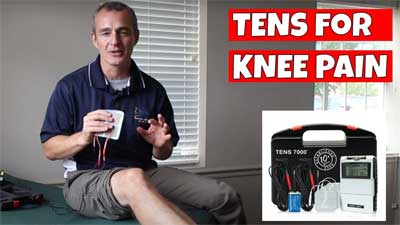
Can you use a TENS unit after knee replacement?
A TENS unit is safe to use after a total knee replacement. It is commonly used during knee flexion and extension exercises. Using TENS to reduce pain during knee replacement exercises may improve range of motion without the need for more medication.

How To Stretch A Stiff Knee After Knee Replacement
Stretching a stiff knee at home requires patience and time. Research suggests a long duration low intensity stretch will produce the greatest benefits in knee range of motion. In this post I will discuss using a Joint Active Systems and static progressive stretch technique to improve knee flexion at home.

Knee Replacement Bending Flexion Exercises at Home
Knee bend, also known as knee flexion, exercises may be performed immediately following knee replacement surgery. This videos shows several examples of knee flexion exercises to be performed at home. 120 degrees of knee flexion is considered normal range of motion following surgery.

Can I Run After Knee Replacement
Conventional advice is to avoid high impact activities after a total knee replacement. This would include running, jogging, and other high impact sports. The concern is the increased wear and tear on the new knee will cause it to wear out sooner or possibly even...
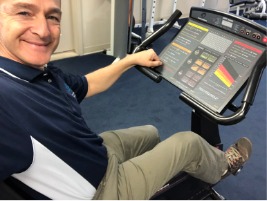
How soon after knee replacement can I use exercise bike?
It is commonly recommended to start using an exercise bike within the first 48-hours following a knee replacement. Standard practice in physical therapy is to begin the bike with a gentle rocking motion until the knee is capable of a completing full rotation without significant pain.
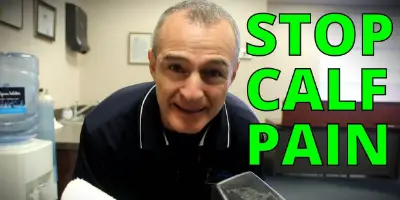
Calf Pain After Knee Replacement
Calf pain can happen for many reasons, but after surgery the most common reason is weakness, swelling, and change in activity levels. These exercises will help improve calf mobility, increase strength, and condition the calf to handle the workload associated with normal walking.
Please check with your physical therapist or doctor before performing these exercises.

Minimalist Running Shoe Review Unboxing Merrell Men’s Trail Glove 4 Runner
The Merrell Men’s Trail Glove 4 Runner has been a great show. I am updating this description today January 1, 2020. I have worn the shoe for work in the clinic as a physical therapist as well as the occasional run. It is ideal for a medium or narrow foot. I absolutely would not recommend it for a wide foot or a foot that will swell over the day.
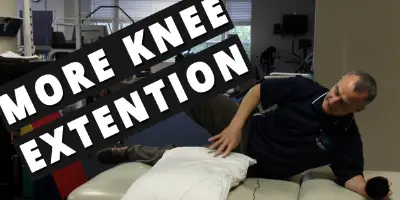
Best Tip To Improve Knee Extension- Prone Hangs
Improve knee extension with this simple and effective exercise! Total knee replacement | ACL reconstruction | Knee Surgery

Using an Elliptical Trainer After Total Knee Replacement Surgery
Using and choosing an elliptical trainer after total knee replacement surgery or any other knee surgery can be challenging. There are so many different brands available on the market. In this video I will show you how to safely get on, off, and use the elliptical trainer whether you are using one at home, at the gym, or in your physical therapy clinic.

3 Versions of a Hip Bridge for Total Knee Replacement Therapy At Home
The hip bridge is a very common exercise following total knee replacement, but doing it correctly isn’t as common. There are three version of the hip bridge and in this video I share information about all three.